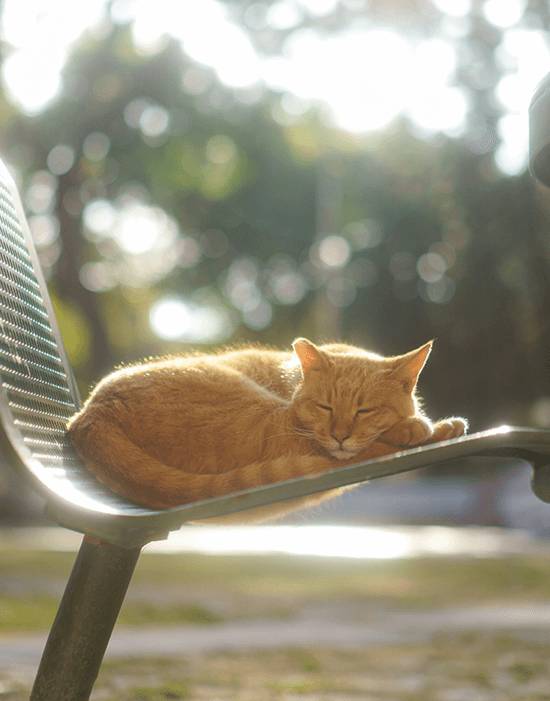ANG INIT!
I initially wanted to call this “Heat, perimenopause, and interior design,” but it didn’t sound as catchy as “Cool and chic.”
But this is basically the premise of this week’s topic: I am going through perimeno, and the heat index of up to 50 degrees celsius is killing me.
It is debilitating and is affecting my productivity. What a struggle!
Being the palaban that we are, though, we decided to get a grip and make changes so that — during days that feel like hell on earth — our space doesn’t have to feel like a sauna.
Opt for light colors
Light colors reflect heat, while dark colors absorb it. Opt for light colors at home — beddings, rugs, curtains, other linens.
Of course, light-colored walls, floors, and furniture are the perfect “base,” but we don’t need a home renovation to make our space cooler. Going for lighter colors will have an immediate effect.
Think crisp whites, soft creams, pale blues, and refreshing greens. These will create an airy and spacious feel, making the room feel naturally cooler.
Work with your windows
Our windows are a major source of heat gain. Heavy, dark curtains will trap heat, while light, airy curtains can help diffuse sunlight and reduce heat buildup.
Consider using cellular shades or bamboo blinds, which offer insulation and ventilation.
Use blackout curtains in bedrooms to keep the sun out during the hottest part of the day and maintain a cooler sleeping environment.
Go for organic
The materials we use in our furniture and decor can significantly impact the temperature of our space. Try to choose natural materials like cotton, linen, and bamboo, which breathe better than synthetic fabrics.
Avoid materials that retain heat, such as leather or dark-colored heavy fabrics. Opt for a cotton or linen sofa instead of a leather one. Choose bamboo blinds over plastic ones.
And for people like me who like to go barefoot at home, incorporate natural stone or ceramic tiles in your flooring for a cooler feel underfoot.
Be a fan of fans
Good ventilation is key to staying cool, but it doesn’t have to break the bank. Strategically opening windows to create a cross-breeze is free and effective, but this might not be enough to keep our bodies at a healthy temperature.

Ceiling fans are more energy-efficient than air conditioners, and using them strategically can significantly reduce our reliance on AC. Check if your ceiling fans are spinning counter-clockwise to push air downwards, creating a cooling effect.
Air circulators and industrial floor fans are our next best option. Remember to clean (and oil) them regularly to maintain efficiency. Invest in energy-efficient fans with high-speed settings for maximum cooling with minimal energy consumption.
(I see a lot of solar fans on marketplaces. I wonder how well they work.)
Keep air conditioners in good condition
Air conditioning can be a lifesaver on scorching days, but it’s essential to use it efficiently.
Regularly clean or replace air filters to ensure optimal performance and energy efficiency. Programmable thermostats allow us to set schedules and maintain a consistent temperature without excessive energy use.
Blackout curtains that block direct sunlight help reduce the load on our air conditioner.
Embrace indoor plants
Plants can naturally cool our home by releasing moisture into the air through transpiration. Choose plants that thrive in warmer climates and place them strategically to maximize their cooling effect.
Snake plants, spider plants, and ZZ plants are low-maintenance options that are great for air purification.
Group plants together to create a mini-oasis and enhance their cooling effect.
Remember fire prevention
While enjoying the cooling benefits of fans and air conditioners, it is crucial to prioritize fire safety. Overheating fans, faulty wiring, and overloaded circuits are potential fire hazards.
Regularly inspect fans for any signs of damage or overheating. Never leave fans unattended for extended periods, especially older models. Avoid placing them near curtains or bedding.
Ensure that all electrical appliances are properly grounded and that circuits aren’t overloaded. Keep flammable materials away from heat sources, including fans and air conditioners.
Use surge protectors to prevent power surges that can damage appliances and potentially cause fires. Have your electrical system inspected regularly by a qualified electrician.
Try DIY cooling solutions
Beyond larger investments (and the fact that our electric bill usually goes up this time of the year), simple DIY techniques can provide immediate relief:
- Place bowls of ice water in front of fans to create a cool mist
- Freeze water in reusable ice packs and strategically place them around your home
- Misting fans, which add a fine mist of water to the air, can also provide a refreshing cooling effect
If you use a misting fan, remember to clean it regularly to prevent mold buildup.
Writing this week’s column is like making notes to myself, too, after research. I do hope they help all of us. (Oh, and store water for bathing, cleaning, and drinking since it is also the season of pipe repairs!)
PS: Please leave a bowl of water outside your gate for stray animals. Kindness is the currency of our time.
#PropertyReportFeature
#FeaturedStory
